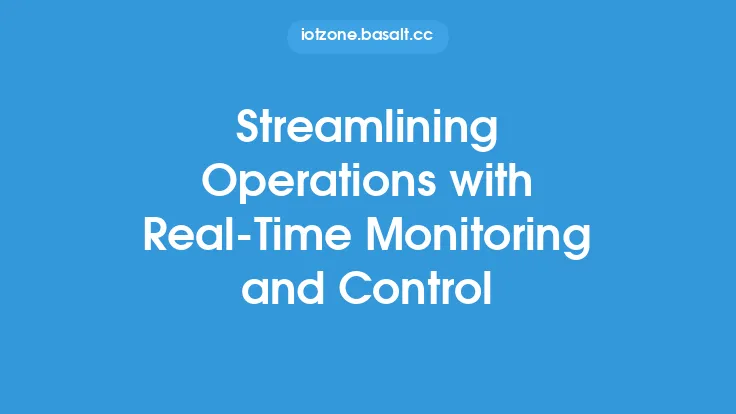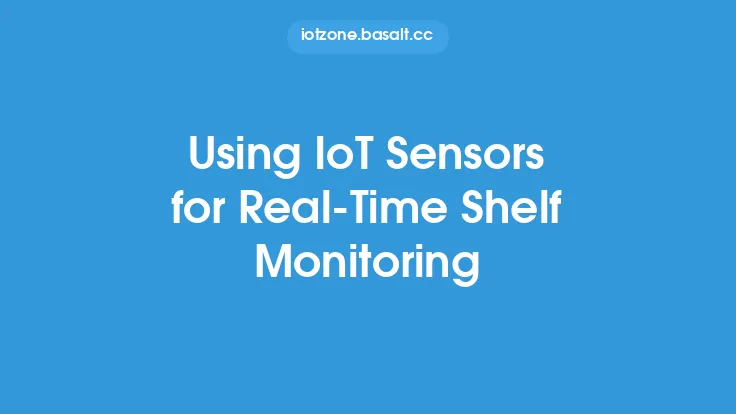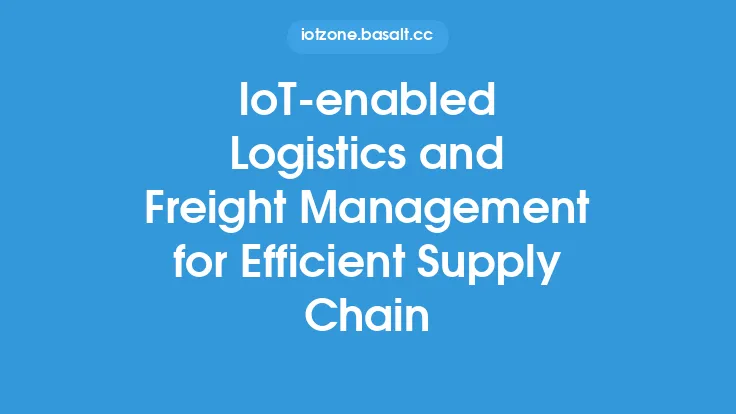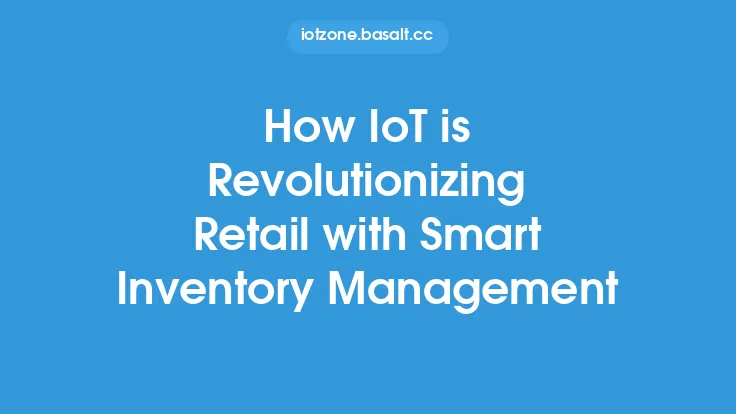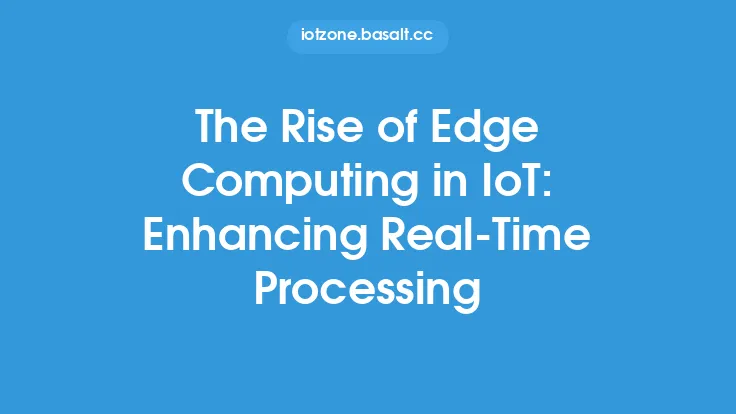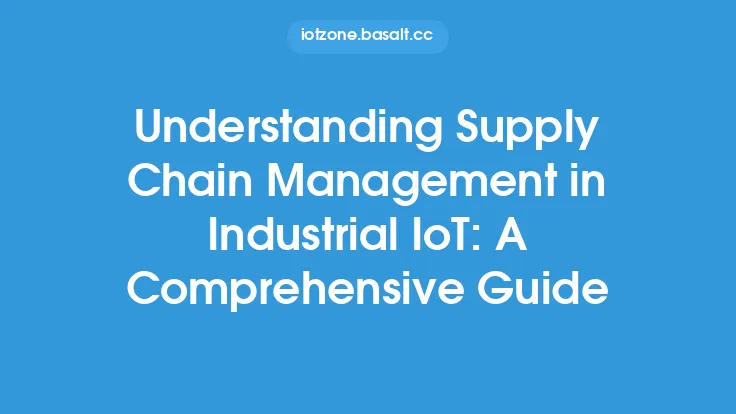The Internet of Things (IoT) has revolutionized the way businesses manage their inventory, enabling real-time monitoring and optimization. By leveraging IoT devices and sensors, companies can track their inventory levels, locations, and conditions in real-time, making it possible to respond quickly to changes in demand, supply chain disruptions, and other factors that can impact inventory management. In this article, we will explore how IoT enables real-time inventory management and optimization, and the benefits that businesses can gain from implementing IoT-based inventory management systems.
What is Real-Time Inventory Management?
Real-time inventory management refers to the ability to track and manage inventory levels, locations, and conditions in real-time. This involves using IoT devices and sensors to monitor inventory levels, track inventory movements, and detect changes in inventory conditions. Real-time inventory management enables businesses to respond quickly to changes in demand, supply chain disruptions, and other factors that can impact inventory management. It also enables businesses to optimize their inventory levels, reduce stockouts and overstocking, and improve their overall supply chain efficiency.
How IoT Enables Real-Time Inventory Management
IoT enables real-time inventory management by providing businesses with real-time visibility into their inventory levels, locations, and conditions. This is achieved through the use of IoT devices and sensors, such as RFID tags, GPS trackers, and sensors that can detect temperature, humidity, and other environmental factors. These devices and sensors can be attached to inventory items, shelves, or storage containers, and can transmit data to a central database or cloud-based platform in real-time. This data can then be used to track inventory levels, monitor inventory movements, and detect changes in inventory conditions.
Key Technologies Used in IoT-Based Inventory Management
Several key technologies are used in IoT-based inventory management, including:
- RFID (Radio Frequency Identification) tags: These are small devices that can be attached to inventory items and can transmit data to a reader device. RFID tags can be used to track inventory levels, monitor inventory movements, and detect changes in inventory conditions.
- GPS (Global Positioning System) trackers: These are devices that can be attached to inventory items or vehicles and can provide real-time location data. GPS trackers can be used to track the movement of inventory items, monitor delivery routes, and detect supply chain disruptions.
- Sensors: These are devices that can detect environmental factors such as temperature, humidity, and vibration. Sensors can be used to monitor the condition of inventory items, detect changes in inventory conditions, and prevent damage or spoilage.
- Cloud-based platforms: These are software platforms that can be used to collect, analyze, and visualize data from IoT devices and sensors. Cloud-based platforms can provide real-time visibility into inventory levels, locations, and conditions, and can enable businesses to optimize their inventory management processes.
Benefits of IoT-Based Inventory Management
The benefits of IoT-based inventory management are numerous, and include:
- Improved inventory accuracy: IoT-based inventory management can provide real-time visibility into inventory levels, locations, and conditions, enabling businesses to improve their inventory accuracy and reduce errors.
- Reduced stockouts and overstocking: IoT-based inventory management can enable businesses to optimize their inventory levels, reducing the risk of stockouts and overstocking.
- Improved supply chain efficiency: IoT-based inventory management can enable businesses to respond quickly to changes in demand, supply chain disruptions, and other factors that can impact inventory management, improving their overall supply chain efficiency.
- Increased visibility and transparency: IoT-based inventory management can provide real-time visibility into inventory levels, locations, and conditions, enabling businesses to increase their visibility and transparency and improve their decision-making processes.
Challenges and Limitations of IoT-Based Inventory Management
While IoT-based inventory management offers many benefits, there are also several challenges and limitations that businesses should be aware of, including:
- High upfront costs: Implementing an IoT-based inventory management system can require significant upfront investment in hardware, software, and infrastructure.
- Complexity: IoT-based inventory management systems can be complex and require significant technical expertise to implement and maintain.
- Security risks: IoT devices and sensors can be vulnerable to cyber attacks and data breaches, which can compromise the security of inventory data.
- Interoperability issues: IoT devices and sensors from different manufacturers may not be compatible, which can create interoperability issues and make it difficult to integrate data from different sources.
Best Practices for Implementing IoT-Based Inventory Management
To get the most out of IoT-based inventory management, businesses should follow several best practices, including:
- Conduct a thorough needs assessment: Businesses should conduct a thorough needs assessment to determine their inventory management requirements and identify the most suitable IoT technologies and solutions.
- Develop a comprehensive implementation plan: Businesses should develop a comprehensive implementation plan that includes timelines, budgets, and resource allocations.
- Ensure data quality and integrity: Businesses should ensure that their IoT-based inventory management system provides high-quality and accurate data, and that data is properly validated and verified.
- Provide training and support: Businesses should provide training and support to employees to ensure that they can effectively use and maintain the IoT-based inventory management system.
Conclusion
IoT-based inventory management is a powerful tool that can enable businesses to optimize their inventory levels, reduce stockouts and overstocking, and improve their overall supply chain efficiency. By leveraging IoT devices and sensors, businesses can track their inventory levels, locations, and conditions in real-time, and respond quickly to changes in demand, supply chain disruptions, and other factors that can impact inventory management. While there are several challenges and limitations to implementing IoT-based inventory management, the benefits can be significant, and businesses that follow best practices and invest in the right technologies and solutions can achieve significant improvements in their inventory management processes.
